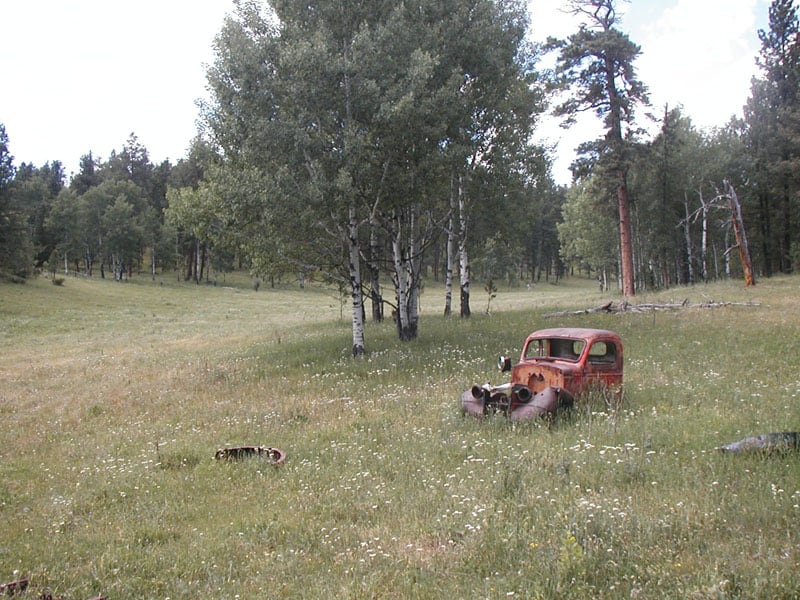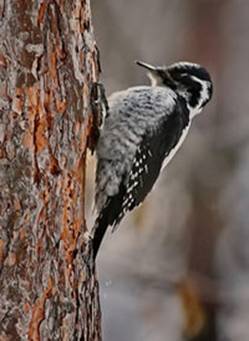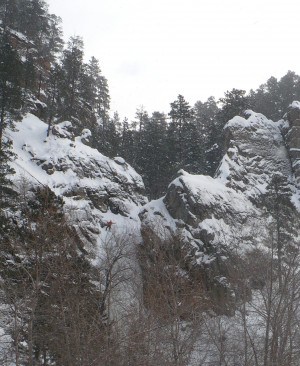Robert H. Nelson is at it again, pitching the transfer, sale, or lease of much of our federal lands. Today’s installment comes from the Denver Post, 3/11/2011, where Nelson writes as “Guest Commentary” a little diatribe titled Free America’s West. I remember Nelson’s earlier attempts to sell the idea of selling or leasing much of the federal estate. I wrote about it in my little quasi-blog Eco-Watch in 1995, as Public Lands, Private Rights, Public Responsibilities. Let’s look at a bit of both my argument and Nelson’s. You can decide which is in the best interest of the American people.
Here is a snip from my “Public Lands, Private Rights, Public Responsibilities”, which was in part a response to Nelson’s Book Public Lands, Private Rights:
Even though much of the history of the West (or at least the mythology of the West) has been written in terms of individual rights and responsibilities, there has always been lurking in the shadows of conscience the public side of life and the responsibilities that accrue to living in communities, in regions, in nations, and on Earth. To highlight some of these issues consider the following: (1) responsibilities to maintain clean air and water systems; and (2) responsibilities to provide habitat for communities of species that keep landscapes functioning as forests, as marshlands, as prairies, etc. to form the environment that nurtures the variety of life that provides both sustenance and quality for our own existence?
What are we to do, if anything, to try to maintain the functions of the biosphere that cleanse both air and water throughout the world? Many of those functions are performed by our forests, rangelands, marshlands, and estuaries. Also, what value do we find in the presence of other species with whom we share the Earth? We commonly recognize and mourn the loss of each species that vanishes from the planet (at least those few that we hear about–or even know about) but we seem to forget that these ‘other’ species do not recognize our so-called property rights and often fall victim to human endeavors. …
Arguments that [Robert ] Nelson and others bring to the table are only germane when placed in context. Absent context how could we get to the heart of this or any other issue? What is at issue, it seems, is: Who are we as a people? What is our heritage? What heritage are we to leave to those who follow in our footsteps? Some of our collective desire to leave a proud heritage is wrapped up in the noble goals embodied in federal land and resource law. What are we to do, for example, about habitat needs for species that have grown up and flourished in Western wildlands? What about the access to relatively undeveloped public lands (also strictly undeveloped lands in primitive areas and wilderness areas) for recreation and spiritual renewal that so many take for granted? Would this access be retained in proposals for changing management? If so, where and at what cost to the user? What about the ‘attraction value’ that accrues to lands adjacent or in close proximity to federal set-asides from development? Are Sun Valley, ID, Jackson Hole, WY, Whitefish, MT, Telluride, Aspen, Vail, CO, Taos, NM, Moab, UT valuable in their own right as isolated communities filled with rather rich inhabitants? Or are the values somehow generated from the intertwining of private and public lands and the unspoken trust that the public lands are to remain intact? …
Yes, public land management is expensive. Federal government administration is expensive, as noted by all recent administrations as well as the Congress. So is a new home, a new car, or even most vacations we Americans take. But that is not to argue that we should abandon government improvement efforts. Government should be improved, and if the Government Performance Act of 1993 ever takes hold some of the costs of federal administration will better balance with the beneficial outcomes from that administration. And in part that balance will develop, assuming that it develops at all, due to partnerships between federal, state, county, and municipal government administrations working in concert with other organizations hand-in-glove for better government in general rather than locked in head-to-head competition one with another. As we begin to discuss these matters maybe we can find better roles for government generally and specifically in the hierarchy from local to federal government. But to ask right now, out-of-context, if federal government administration is too expensive is to ask a question anchored in air.
And here is a snip from Nelson’s “Free America’s West”:
The U.S. can no longer afford to keep tens of millions of acres of “public” land out of service. Some of these lands have great commercial value; others are environmental treasures. We need policies capable of distinguishing between the two. …
Probably no more than 20 percent of the tens of millions of acres of public lands are nationally important, requiring federal oversight and protection. This includes 45 million acres of Forest Service and BLM lands in the national wilderness system and other environmentally special areas such as BLM’s Grand Staircase Escalante National Monument in southern Utah.
An additional 60 percent, perhaps, are ordinary lands, used principally for recreational purposes, such as hiking, hunting, fishing and off-road-vehicle use. Most of the remaining public lands are useful primarily for commercial purposes, such as the timber-rich forests in the Pacific Northwest.
A rational public lands policy more suited to current and future needs would put the nationally important lands into a newly reorganized federal environmental protection system. Ordinary recreational lands would be managed at the state and local level, perhaps by transferring them to local counties. What better steward of a local recreation area than the people who live in the area?
The commercially most valuable lands, meanwhile, would be transferred to new ownership or put under long-term federal leases. Lands that have real commercial value could produce a double benefit: revenue from leases and land sales, and additional revenue from the jobs, minerals, oil, gas, lumber and other commodities the freed-up lands would produce.
It is time to end outdated federal land policies that are draining our country’s wealth, tying up valuable resources in red tape and bureaucracy, and harming the environment.
Where will all the hot air around this issue go this time around?

 Columbia University Press
Columbia University Press Associated PressMichael E. Mann
Associated PressMichael E. Mann





